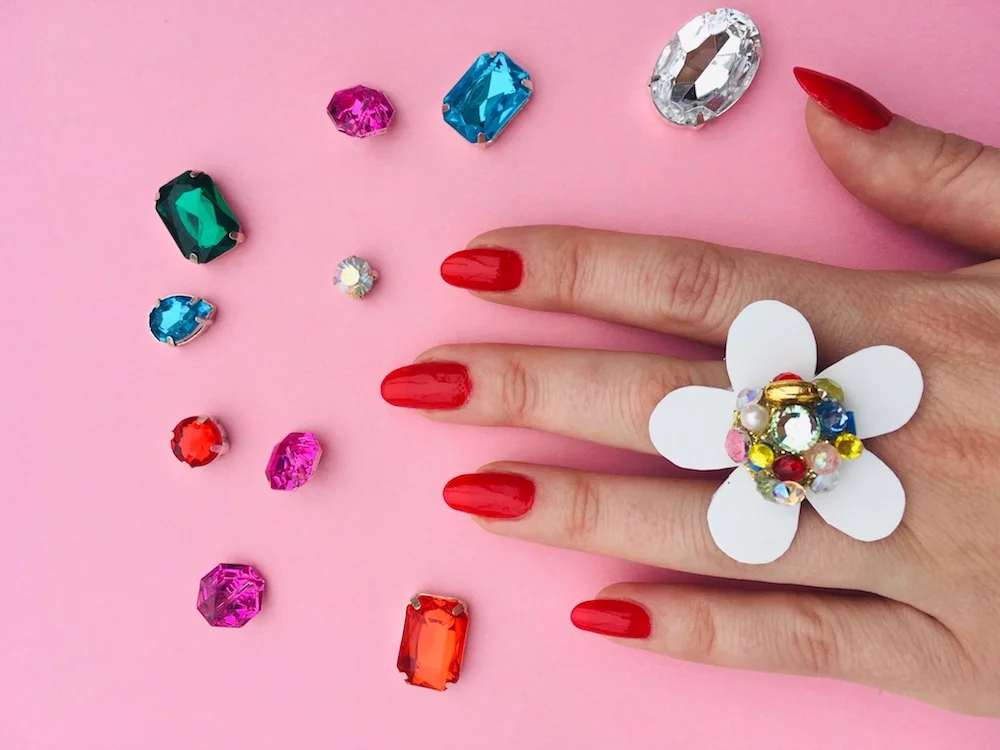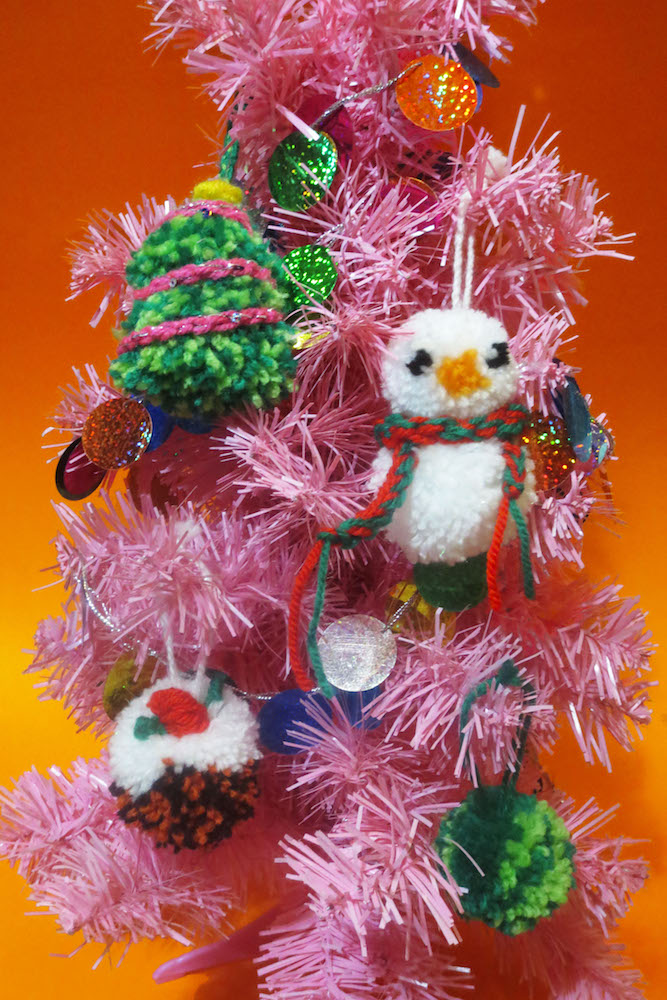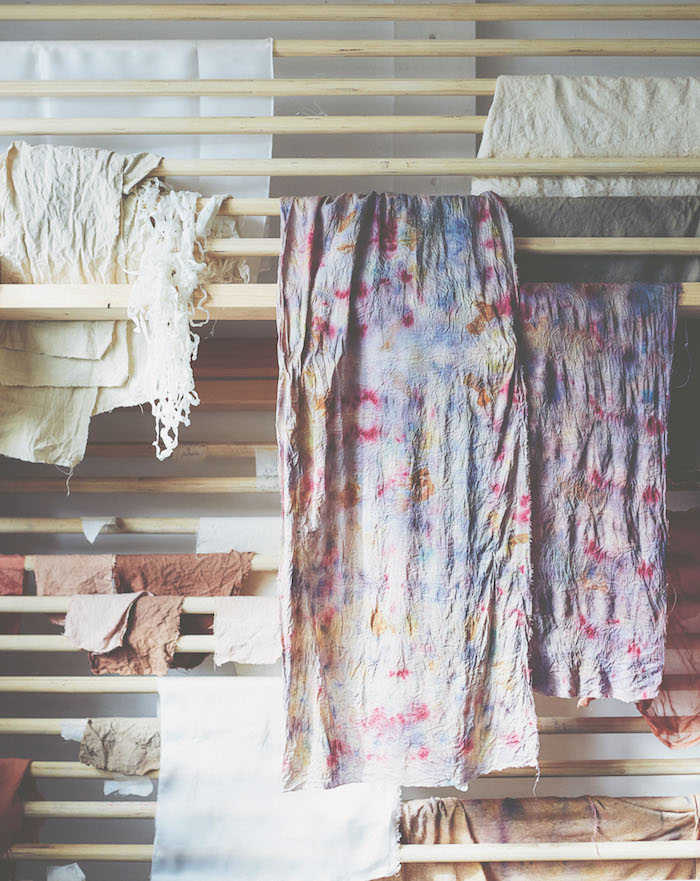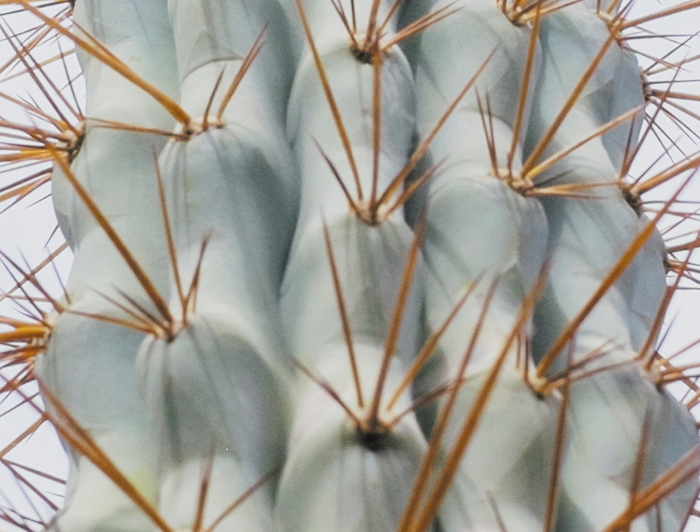Turn to page 106 of the late summer issue of Oh Comely to read Babs Behan's tutorial on bundle dyeing with natural materials. But before you begin to dye, you'll need to mordant your fabric – this will help the colour stay on your fabric and not come off in the wash. This mordant recipe is also courtesy of Babs.
Mineral-based mordant alum and cream of tartar
Alum (potassium aluminium sulphate) helps to improve the colourfastness of dyes, so they are less likely to fade from light and washing. It also helps to brighten colour tones. It is considered non-toxic in small quantities, so it is safe to use, but it should not be inhaled, ingested or come into contact with skin as it can cause irritation. You can buy it online or from Asian or South American food stores. Use the exact quantities of alum required for the weight of your fibre, so that it’s all absorbed by the fibre and not wasted. Always work in a well-ventilated area and wear gloves, dust mask and eye protectors when working with alum-based mordants. Safety bit over, let’s begin….
You will need:
- Fibre (washed, scoured and dry – see the instructions in the magazine)
- Scales
- Alum
- Cream of tartar
- 2 large pots, with lids
- Measuring spoons
- Heatproof jar
- Long-handled spoon
- Small lid or plate (optional)
- pH-neutral soap
Now:
1 Weigh the fibre after it has been washed, scoured and dried. Use 8% of the weight of the fibre in alum, and 7% of the weight of the fibre in cream of tartar. You should weigh the fibre and calculate the correct weight of alum and cream of tartar to use before you begin preparing the mordant.
2 Place the fibre in a large pot of water and allow it to soak for at least one hour, or ideally 8–12 hours/overnight, so that the fibre is pre-wetted.
3 Fill a pot with room-temperature water. The pot should be large enough to contain the fibre you want to mordant and allow enough water for it to be covered and move around freely.
4 Measure out the cream of tartar into a heatproof jar and add enough boiling water for it to dissolve completely when stirred. Then add this to the pot of water, stirring with a long-handled spoon to mix it in.
5 Measure out the alum into the heatproof jar and add enough boiling water for it to dissolve completely when stirred. Then add this to the pot of water, again stirring with a long-handled spoon to mix it in.
6 Add the pre-wetted fibre to the mordant solution. Bring the solution to a simmer, cover with a lid and simmer for one hour.
7 Stir gently and occasionally with a long-handled spoon. Be sure to tease out any air bubbles trapped under the fibre, as this can make it rise above the surface of the liquid where the mordant cannot reach it properly. Moving the fibre also helps to separate any areas that have been touching, or touching the side of the pot, where the mordant may not be able to reach them.
8 Turn off the heat and allow the fibre to cool in the pot overnight. Then remove the fibre from the pot and gently wring out any excess liquid.
9 Rinse the fibre with cool water, wash with pH-neutral soap and cool/lukewarm water, then rinse again to remove the soap.
10 Use the fibre in its damp state and add it to your dye bath. Or hang out the fibre to air dry somewhere warm and dry, out of direct sunlight, for later use.
Now you're ready to dye! Turn to page 106 of the late summer issue to begin. We'd love to see the results: tag us @ohcomelymag. This recipe is taken from Botanical Inks: Plant-to-Print Dyes, Techniques and Projects by Babs Behan (Quadrille).
.jpg)






